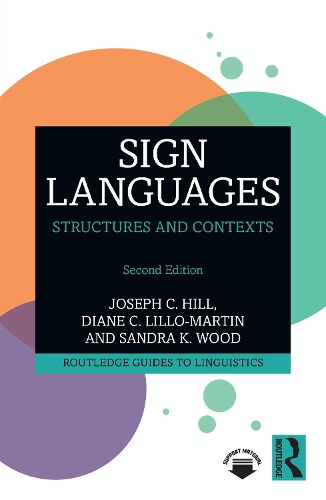Readings Newsletter
Become a Readings Member to make your shopping experience even easier.
Sign in or sign up for free!






Sign Languages: Structures and Contexts provides a succinct summary of major findings in the linguistic study of natural sign languages. Focusing on American Sign Language (ASL), this book offers a comprehensive introduction to the basic grammatical components of phonology, morphology, and syntax with examples and illustrations.
Revised throughout, this new edition:
demonstrates how sign languages are acquired by Deaf children with varying degrees of input during early development, including no input where children create a language of their own discusses the contexts of sign languages, including how different varieties are formed and used, attitudes toward sign languages, and how language planning affects language use includes a new chapter on the similarities between signed and spoken languages offers additional visuals and explanations as well as more coverage of signed languages other than ASL is accompanied by updated online support material, which hosts links to video clips
This engaging and accessible introduction to sign languages is essential reading for students studying this topic for the first time with little or no background in linguistics.
$9.00 standard shipping within Australia
FREE standard shipping within Australia for orders over $100.00
Express & International shipping calculated at checkout
Sign Languages: Structures and Contexts provides a succinct summary of major findings in the linguistic study of natural sign languages. Focusing on American Sign Language (ASL), this book offers a comprehensive introduction to the basic grammatical components of phonology, morphology, and syntax with examples and illustrations.
Revised throughout, this new edition:
demonstrates how sign languages are acquired by Deaf children with varying degrees of input during early development, including no input where children create a language of their own discusses the contexts of sign languages, including how different varieties are formed and used, attitudes toward sign languages, and how language planning affects language use includes a new chapter on the similarities between signed and spoken languages offers additional visuals and explanations as well as more coverage of signed languages other than ASL is accompanied by updated online support material, which hosts links to video clips
This engaging and accessible introduction to sign languages is essential reading for students studying this topic for the first time with little or no background in linguistics.